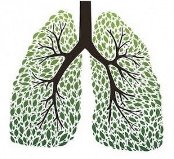Respiratory physical therapy
Respiratory physical therapy for babies/infants and children:
Used technique:
- Autogenic drainage
- Assisted autogenic drainage
What is (assisted) autogenic drainage?
This technique was developed by
Jean Chevalier and aims to remove mucus from the lungs.
This treatment is important when infectious diseases like bronchitis, bronchiolitis or lung inflammation are seen. But also other congenital diseases like cystic fibrosis, primary ciliary dyskinesia and diseases that occur immediately after giving birth to premature babies.
Autogenic drainage for adults
It is a technique helping patients to control their breathing in order to efficiently remove mucus from their lungs.
The mucus is localized in the airways. By lowering the lung volume, mucus will move more centrally so it can be expectorated easily.
Assisted autogenic drainage for babies/infants and children
For babies and infants, soft thoracic pressing in combination with bouncing is used. The thoracic pressing lowers the lung volume of the baby or infant, because they are not able to control their respiration yet.
In order to remove mucus, assisted autogenic drainage is applied. To expectorate mucus in babies, the coughing reflex is used.
Which material can be used?
- Large sitting ball
- Bubble blower
- Flutter and/or PEP (Positive Expiratory Pressure device)
The baby or infant sits on the lap of the physical therapist that is sitting on a large sitting ball on which he is bouncing. This is relaxing for the child and will accelerate his airstream so the mucus will move in the lungs.
We can use a bubble blower, flutter or PEP to remove mucus.
The use of a flutter

